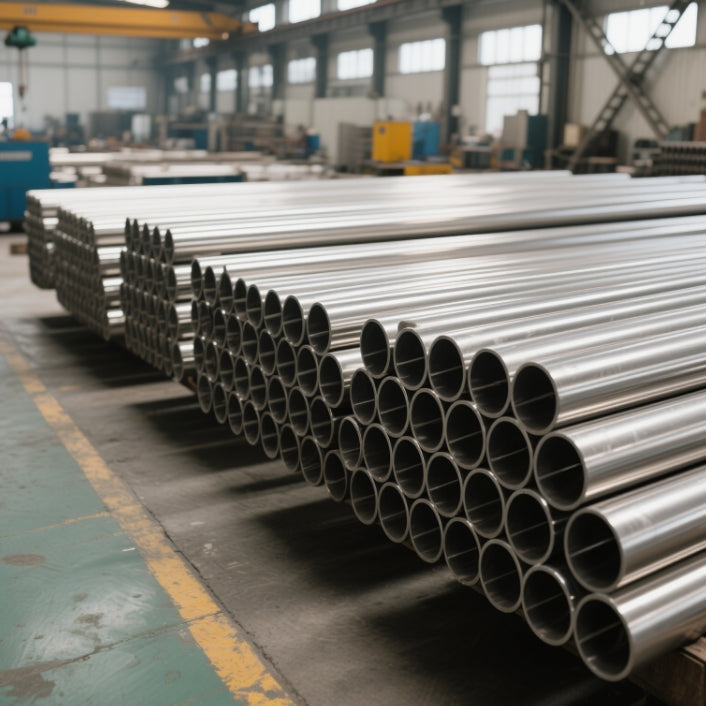
Carbon Steel vs Stainless Steel, Which Is Stronger?
Table of Contents
Introduction
When selecting materials for construction or manufacturing, the carbon steel vs stainless steel debate remains pivotal. Both alloys offer unique advantages, but their strength profiles differ significantly. This analysis explores their mechanical properties, corrosion resistance, and practical applications, supported by real-world examples and technical data. Understanding these differences ensures optimal material selection for projects ranging from skyscrapers to kitchen appliances.
What Is Carbon Steel?
Carbon steel constitutes an iron-carbon alloy containing 0.12%-2% carbon content. Its simplicity gives exceptional tensile strength (500-850 MPa) at lower costs. Common applications include structural beams, railway tracks, and cutting tools. However, the absence of chromium makes it vulnerable to oxidation. Regular maintenance through galvanization or painting becomes crucial. High-carbon variants (0.6%-1% carbon) demonstrate remarkable hardness but reduced ductility, making them ideal for blades and punches.
What Is Stainless Steel?
Stainless steel incorporates 10.5% minimum chromium content, creating a passive oxide layer for corrosion resistance. The 400 series (e.g., 430 grade) offers basic protection, while 316L surgical steel resists saltwater corrosion. Austenitic grades like 304 provide excellent formability for kitchen equipment. Polished stainless steel achieves 0.05μm surface roughness, enhancing both aesthetics and cleanability. Though generally weaker than carbon steel (500-700 MPa tensile strength), its longevity in harsh environments justifies higher costs.
Strength Comparison
Carbon steel's superiority in mechanical strength manifests in yield strength measurements: 350 MPa vs stainless steel's 210 MPa average. Structural tests show carbon steel beams withstand 25% greater loads before deformation. However, stainless steel maintains integrity in cyclic loading scenarios due to strain hardening. In impact testing, carbon steel absorbs 50-100 Joules at -40°C compared to stainless steel's 30-60 Joules. The choice depends on whether static strength or fatigue resistance takes priority.
Real-World Applications
Industrial presses utilize carbon steel frames for 200-ton compression forces, while food processing plants prefer stainless steel conveyor systems for steam sterilization. Architectural projects showcase hybrid approaches: carbon steel skeletons with stainless steel cladding. The Eiffel Tower's original carbon steel structure required 60 tons of paint annually, whereas modern landmarks like the Gateway Arch use 304 stainless exterior panels for permanent protection.
Maintenance Comparison
Carbon steel demands rigorous upkeep: annual repainting costs average $8-$12 per sq.ft versus stainless steel's occasional detergent washes. Industrial studies show carbon steel pipelines require replacement every 15-20 years, while stainless versions last 40+ years. However, stainless steel's passive layer can degrade in chloride-rich environments, necessitating electrochemical passivation treatments every 5 years at $3-$5 per sq.ft.
Environmental Factors
Coastal installations show carbon steel corrosion rates of 0.5mm/year versus stainless steel's 0.02mm/year. In arid climates, carbon steel performs adequately with 0.1mm/year loss. Lifecycle analyses reveal stainless steel's 70% recycled content reduces environmental impact despite higher initial emissions. Carbon steel production emits 1.8 tons CO2/ton compared to stainless steel's 2.5 tons, but frequent replacements negate this advantage in humid applications.
FAQ
Q: Can stainless steel replace carbon steel in load-bearing structures?
A: Only with substantial cross-section increases (30%-50%), making it economically unfeasible for most projects.
Q: How does 430 stainless compare to 304 grade?
A: 430 offers 85% of 304's corrosion resistance at 60% cost, but with 20% lower tensile strength.
Q: What's the temperature limit for carbon steel?
A: Carbon steel maintains properties up to 425°C, while stainless steels (e.g., 309) withstand 925°C.